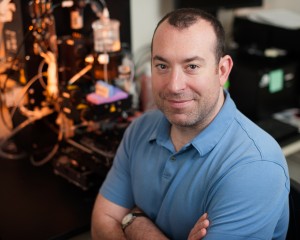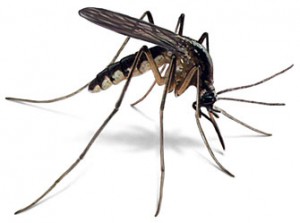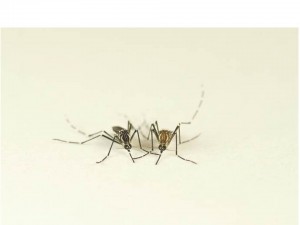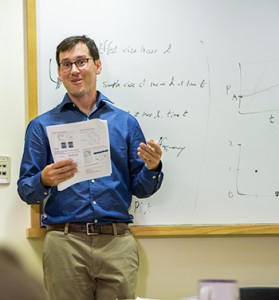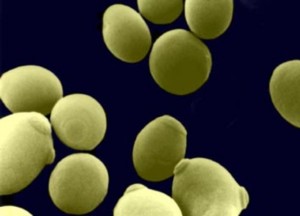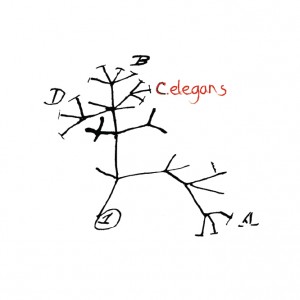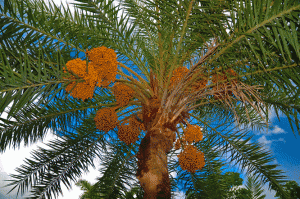Enter your address to receive notifications about new posts to your email.
Articles tagged Population Genetics
(72 results)
-
Mapping structural variants with nanochannel arrays
Short-read sequencing has fueled the acceleration of genetic research But though these next-generation methods are fast and efficient, they can’t do everything well. One important area in which short-reads fall short is detecting structural variants (SV), where chunks of the genome are deleted, inserted, repeated, inverted, or in some other way shuffled around compared to…
-
New Faculty Profile: Erik Andersen
New Faculty Profiles showcase GSA members who are establishing their first independent labs. If you’d like to be considered for a profile, please complete this form on the GSA website. Erik Andersen Assistant Professor of Molecular Biosciences (Since 2013) Northwestern University Lab website Personal Twitter: @ecandersen Research program: My lab has broad interests…
-
Working through the issues: Science, ethics and governance of gene drive research
The Committee on Gene Drive Research in Non-Human Organisms convened by National Academies of Sciences, Engineering, and Medicine held an information gathering meeting on October 28, 2015, to consider the Science, Ethics and Governance Considerations for Gene Drive Research. This meeting comes as a component of a large Gene Drive study, which is set to review the…
-
Modeling the promise and peril of gene drive
What if we could eradicate malaria by engineering a mosquito population that doesn’t transmit the disease? What if we could control invasive species that outcompete natural populations? What if we could get rid of insecticide-resistant pests not by developing new chemical treatments, but instead by changing the population itself and driving it toward extinction? Although…
-
Using evolution to link genes and behavior
Genes to Genomes asked Dr. Carolyn (Lindy) McBride (Princeton University), a recipient of the Rosalind Franklin Award for Young Investigators, to tell us about her research and what it means to receive the award. She was recognized for her Rosalind Franklin Award along with another recipient, Dr. Maria Barna, at the 2015 American Society of Human Genetics…
-
Biotechnology Regulations to be Updated
The federal regulatory policy in use today for biotechnology products, known as the Coordinated Framework for the Regulation of Biotechnology, was created in 1986 through a joint effort between the U.S. Department of Agriculture (USDA), the Environmental Protection Agency (EPA), the Food and Drug Administration (FDA), the National Institutes of Health (NIH), the National Science Foundation…
-
Geneticist John Novembre named MacArthur “Genius”
GSA is proud to congratulate GENETICS author John Novembre, who was recently named a 2015 MacArthur Fellow or “MacArthur Genius.” Novembre is a computational biologist whose research focuses on understanding human evolutionary history. His research findings have improved the field’s knowledge of human migratory patterns and demonstrated a correlation between shared ancestral geography and genetic similarity among Europeans. These…
-
Human Genetic Diversity and Social Inequalities
As ancient humans spread across the globe from their evolutionary birthplace in Africa, they tended to lose a little genetic diversity at each step along the way. New settlements were probably often founded by small groups that carried only a subset of the total diversity present in their homelands. Successive rounds of this “founder effect”…
-
Sex with Benefits: Candida albicans and the Selective Advantage of Mating
A vast number of species depend on sexual reproduction for survival. Sex facilitates adaptation and rids populations of deleterious mutations. Despite the benefits of this process, sex can be remarkably costly and disrupt already advantageous genetic combinations. Only 20% of fungal species have been observed to reproduce sexually, and a long-standing mystery for researchers is…
-
The new genomic world of wild worms
Mark Blaxter (Institute of Evolutionary Biology, University of Edinburgh) reports on the “Caenorhabditis Genomes Project” workshop at GSA’s recent 20th International C. elegans Meeting. Caenorhabditis elegans, affectionately referred to as “the worm,” is one of the prettiest and most informative of the model organisms. It is see-through, has a simple lifecycle and a remarkably simple anatomy,…
-
A “date” with the history of Phoenix dactylifera cultivation
The sticky fruit of the date palm has a tangled history. New research in G3 explores the palm’s genetic diversity and traces its earliest cultivation to at least two distinct regions in North Africa and the Arabian Gulf. The date palm (Phoenix dactylifera) is one of the world’s oldest cultivated trees and has close ties…


